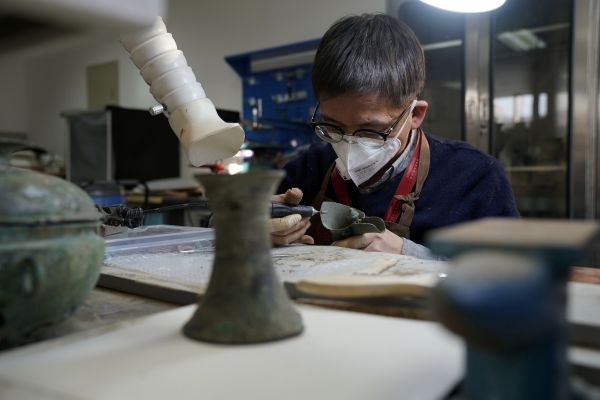Cultural relics are a witness to human history. Improper handling of unearthed cultural relics may result in a lack of understanding of a certain history. The freeze-drying treatment of acidified paper cultural relics is also a protection of freeze-dried cultural relics.
Modern research results show that acid plays a leading role in the destruction of paper cultural relics. It is precisely because of the effect of acid that a considerable number of paper cultural relics have completely lost their mechanical strength and are on the verge of destruction. Taking acidified paper cultural relics as the object, the acidity of the paper cultural relics was completely removed after the vacuum deacidification test, and then the paper cultural relics after being freeze-dried by a vacuum freeze dryer did not appear shrinkage, adhesion, deformation, etc., and the ink writing was uniform. Keep it intact.
Wooden or bamboo cultural relics are generally rich in water and the material is soft and fragile due to long-term burial in the soil layer with high moisture content. Because it has been soaked in water for many years, it is relatively difficult to store it dry, and a little carelessness will affect or even destroy the body of the cultural relic. The traditional drying method: drying naturally in the air will cause serious shrinkage, deformation and cracking, and the serious thing is that the cultural relics become completely unrecognizable and lose their due value. If it is not dehydrated, it can only be stored in water, and cannot be displayed and collected.
Freeze-drying technology helps the protection of wooden cultural relics, and low-temperature freeze-drying storage can effectively prevent shrinkage, cracking, breaking and other phenomena. Most of the cultural relics were also dehydrated and shaped, and a large number of cultural relics were successfully protected and restored.

Applications
The rich material cultural heritage of Chinese civilization contains a large number of wooden cultural relics. Wooden cultural relics unearthed in coastal areas or out of the ocean are in a saturated state and need to be dehydrated and shaped before they can be preserved and displayed. Smaller wooden cultural relics can be dehydrated and shaped by solvent replacement. However, due to problems such as environmental pollution and fire hazards, it is difficult to apply to the protection of large saturated wooden cultural relics.
In response to this actual demand, Zhejiang Provincial Museum, guided by modern technology, has conducted long-term exploration and achieved fruitful scientific research results. In the award-winning project of "freeze-drying and stabilizing unearthed wooden cultural relics saturated with water technology research and development and application", aiming at the protection of unearthed (water-exposed) wooden cultural relics, the scientific research team of Zhejiang Provincial Museum and Zhejiang University carried out the freeze-drying and pretreatment of wooden cultural relics. Research on basic science and technology has developed key technologies such as automatic hot-soaking treatment of large-scale wooden cultural relics and freeze-drying of large-scale wooden cultural relics, and achieved the goal of dehydration and stereotype protection of unearthed (water-exposed) large-scale wooden cultural relics. The project has made outstanding innovations in vacuum freeze-drying of large-scale water-saturated wooden cultural relics and batch freeze-drying of small and medium-sized wooden cultural relics, effectively reducing the risk of failure in the treatment of wooden cultural relics and greatly improving the efficiency of protection work, which has significant social benefits and indirect economy benefit. The project has obtained 5 authorized invention patents, 1 utility model patent, and published 25 papers, including 11 papers included in SCI/EI. "The overall technology has reached the international leading level in the cultural relics protection industry."
The results of this project have been applied in the protection of many batches of cultural relics, such as the wooden components unearthed from the Yuan Dynasty sluice site in Zhidanyuan, Shanghai, the Maoshan canoe in Yuhang, Hangzhou, and the wooden components unearthed from the Yandaishan site in Yizheng, Jiangsu. Among them, the Maoshan canoe was unearthed from domestic archaeological excavations The longest and most complete prehistoric canoe is an important evidence of Liangzhu culture. The project results have made a significant contribution to the protection of cultural heritage in Zhejiang Province and improved the technical level of the protection and restoration of wooden cultural relics in my country.